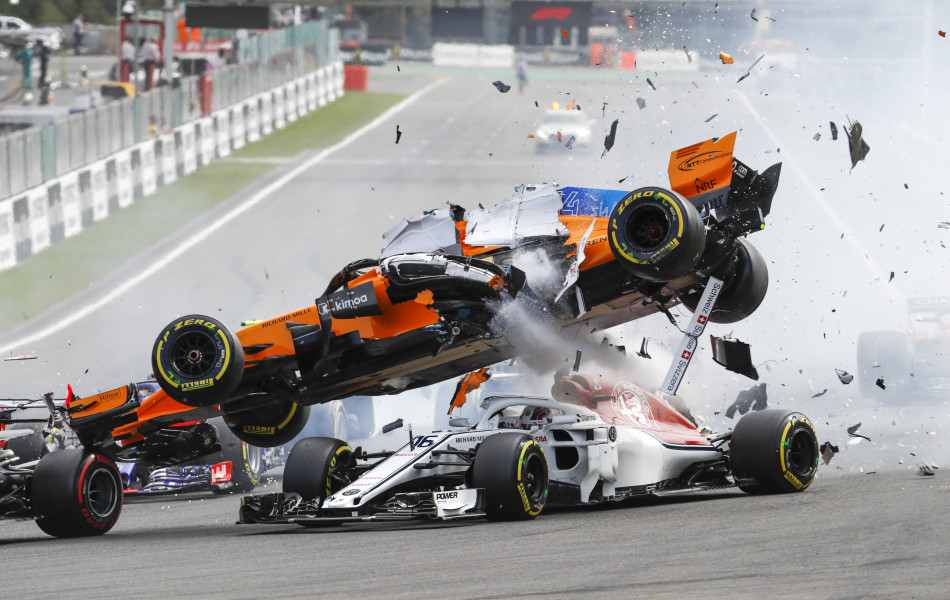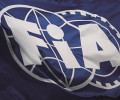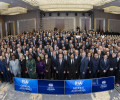AUTO - How the FIA’s Serious Accident Study Group analyses and acts on crashes across motorsport worldwide
From the latest AUTO+ Medical issue

19 August 2018, Campo Grande, Brazil: A Brazilian StockCar Light Championship race is well underway as a number of drivers pull into the pitlane for a stop. One driver, Erik Mayrink, is serviced by his pit crew and then tries to rejoin the pitlane but he is hit by a car on his outside. Mayrink’s car then collides with another and is sent careering towards a group of mechanics, crashing into three of the workers before hitting a fourth who is sent flying into the air by the collision.
Three of those mechanics were rushed to the nearby Santa Casa de Campo Grande hospital, one suffering a broken tibia, another a broken foot and a third suffering brain swelling. Whilst all are expected to make a full recovery it was clearly a serious accident that requires analysis.
And that is exactly the purpose of the FIA’s Serious Accident Study Group (SASG). This accident in Brazil was one of a number reviewed recently by the SASG, with recommendations for preventative safety measures sent to Brazil’s National Sporting Authority (ASN).
For the FIA, safety is very much a global issue and it does not matter whether an accident happens in an FIA-governed world championship event like F1 or World Rally, or a national grass roots event. The remit is that all serious accidents should be investigated.
Of course, it also proactively assesses and recommends measures to prevent those types of accidents occurring the first place.
At its quarterly meetings, the SASG will study accidents that have caused fatalities or serious physical injuries – to drivers, co-drivers, or anyone else, such as staff, officials and spectators. The group will also look, when appropriate, at severe accidents where there might not be physical consequences, such as the crash between Fernando Alonso and Charles Leclerc at the 2018 Belgian Grand Prix, where the Halo frontal protection device prevented Alonso’s car from hitting his fellow driver.
Other accidents that the SASG has investigated recently include the 2018 FIA Formula 3 World Cup race in Macau, where Sophia Flörsch suffered a fractured spine after her car went airborne and left the track; and the 2018 Indycar race at Pocono, where a 200mph+ crash left Robert Wickens with severe injuries.
“The aim of this Group is eventually to reduce the risk of accidents,” says FIA Medical Commission President and SASG Deputy Chairman Gérard Saillant. “And when an accident does occur, to reduce the physical consequences for the people involved.”
The seriousness with which this work is taken is demonstrated by the fact that FIA President Jean Todt personally chairs each meeting of the Group. The other members are the presidents of every FIA sporting commission, including Single-Seater, Rally, Touring Car, Karting, Drifting, Drag Racing and Hill Climb. Also in attendance are the FIA safety staff and sporting department heads. No area of motor sport is left unrepresented.
“Through the SASG, great progress has been made by the FIA under Jean Todt’s leadership,” says Saillant. “And with each meeting attended by the President of each FIA Sporting Commission, it makes the SASG a great platform to raise awareness on these issues and exchange on them.”
Saillant believes that the awareness-raising element is crucial to improving safety standards in motor sport across the world. And every accident that is studied provides more knowledge and experience to deal with the next.
“In a way each accident that occurs, while it is regrettable of course, serves to prevent the same type of accident happening again,” adds Saillant.
Data Drive
The FIA’s World Accident Database is central to this. Launched in May 2015, it brings together data from accidents around the world, from Formula One to karting, into a searchable, secure and confidential database that researchers can use to accurately identify areas for improvement in motor sport safety.
The Database is used by the FIA’s 139 ASNs around the world to add data from any serious fatal accidents that may occur across all motor sport disciplines. The data gathered includes acceleration and speed levels, detailed descriptions of the accidents, as well as the medical repercussions for the people involved.
“It is a crucial tool to have a good overview of all recorded accidents, sorted by discipline and countries,” adds Saillant. “Through this tool, we can see and demonstrate for example that a number of accidents are not handled properly when they are not under the responsibility of an ASN, and that on the contrary, accidents taking place during ASN-covered events have much better handling. The objective of this tool is to improve safety at all racing events.”
In this way, the FIA is able to identify best practice and apply it to all levels of the sport. The FIA may not be able to change the regulations of the championships it does not govern but it can offer a strong recommendation for the improvement and implementation of regulations, as it did for the Brazilian StockCar Light Championship.
The SASG works in conjunction with the FIA Research Working Group, which evaluates research into new safety products and processes conducted by the FIA. This all complements the work of the FIA Safety Commission, which puts forward recommendations to the World Motor Sport Council, the ultimate ruling body.
“The role of the Safety Commission is a regulatory one, the last step before the World Motor Sport Council,” explains Saillant. “The SASG is more ‘on the ground’, plus it works in liaison with the various research groups of the FIA.”
Accident Analysis
The SASG benefits from the multi-disciplinary make-up of its members, which includes doctors, engineers, researchers and promoters, as well as FIA administrative staff. Each accident that is analysed is looked at from both technical and medical sides, and reports are then drafted.
The technical report will provide a very detailed analysis of the causes of the accident, of its mechanism, of the damages to the car, and so on. The medical report provides details on physical injuries and how these occurred. Then conclusions and deductions are made from these two reports.
As well as helping to improve motor sport safety this work will have an additional benefit – road safety.
“It is important to highlight that this is an area where the transfer of knowledge/expertise from the track to the road is central,” says Saillant. “For example, in the latest SASG meeting, the Group discussed the FIA expertise deployment into motorcycle helmet standard improvement.”
It all demonstrates the strength and depth of the FIA’s work in safety at all levels, across all disciplines and in all countries. The ultimate aim is that the FIA can learn and improve upon any serious accident that happens at any motorsport event across the world.
You can read the full issue of AUTO+ Medical here.

 Facebook
Facebook Twitter
Twitter






